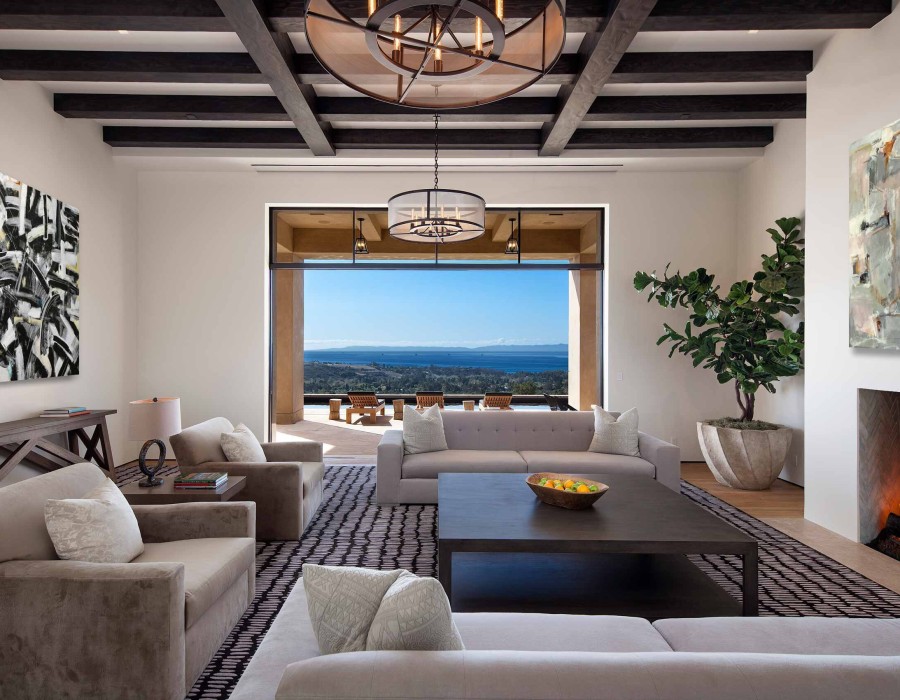Consider a recent project completed by an architect who took inspiration from traditional hacienda design. The client, seeking an energy-efficient, climate-responsive home, desired a fusion of modern amenities with timeless elegance. The result? A home that maintains comfort in the scorching summer heat while minimizing energy consumption. By embracing modern hacienda style architecture, the architect combined adobe-like massing, deep overhangs, and internal courtyards to create a sanctuary that naturally stays cool, even on the hottest days.
The Beauty of Climate-Responsive Design
In warm climates, sustainable design is essential, not just for aesthetics, but for practicality. The traditional hacienda layout, known for its effective use of passive cooling strategies, is being reinterpreted with modern materials and techniques to address today's environmental challenges. Here’s how:
1. Adobe-Like Massing for Thermal Regulation
Traditional adobe construction has long been valued for its thermal mass, which absorbs heat during the day and releases it during cooler nights. Modern hacienda style architecture adapts this feature using innovative materials, such as insulated concrete forms (ICFs) or modern concrete mixes, to provide the same thermal regulation while ensuring structural integrity and energy efficiency.
2. Deep Overhangs for Solar Shading
The classic deep overhangs of a hacienda not only add architectural beauty but are also crucial for shading windows from the harsh midday sun. In modern homes, these overhangs are often extended further and combined with energy-efficient glazing to enhance thermal comfort, reducing the need for air conditioning.
3. Internal Courtyards for Passive Cooling
A central courtyard, a hallmark of traditional haciendas, serves as a natural cooling mechanism by promoting cross-ventilation. By positioning rooms around this shaded space, warm air is drawn out and replaced with cooler breezes. Today, this element is often paired with water features, such as fountains or ponds, to further amplify the cooling effect.
4. Shaded Arcades for Outdoor Living
Shaded arcades, or verandas, were historically used for outdoor living in the cooler parts of the day. Modern adaptations use retractable screens and energy-efficient roofing materials to create versatile, comfortable spaces. These shaded walkways not only enhance the aesthetic value of the home but also provide functional outdoor living areas year-round.
The Science Behind Passive Design
Did you know that 40% of a building's energy consumption goes toward heating and cooling? (Source: U.S. Department of Energy). By designing homes that respond naturally to the local climate, such as through the use of passive cooling techniques found in modern hacienda style architecture, architects can reduce this consumption significantly while enhancing comfort and livability.
Why Is This Relevant for You?
If you’re an architect or a homeowner looking to build a residence in a warm climate, understanding the principles of climate-responsive design through a traditional lens can save you money in the long run. The use of passive cooling, natural ventilation, and sustainable materials creates a comfortable living space without sacrificing style or performance.
By adopting these design principles, homes are not only more energy-efficient but also more sustainable, reducing their carbon footprint while providing the ultimate in comfort. The integration of these features into your design will ensure that your client’s home remains cool in the summer heat while looking timelessly elegant. Whether it’s through passive cooling or energy-efficient building materials, these homes remain relevant, efficient, and beautiful.
Conclusion
By blending traditional design strategies with modern innovations, credible architect Santa Barbara is leading the way in climate-responsive residential design. The result is a perfect synergy between form and function—homes that not only look stunning but are also energy-efficient and sustainable. So, the next time you think about designing a luxury home in a warm climate, consider how modern hacienda style architecture can solve the modern problems of energy consumption while adding a sense of timeless elegance to the space.





Comments